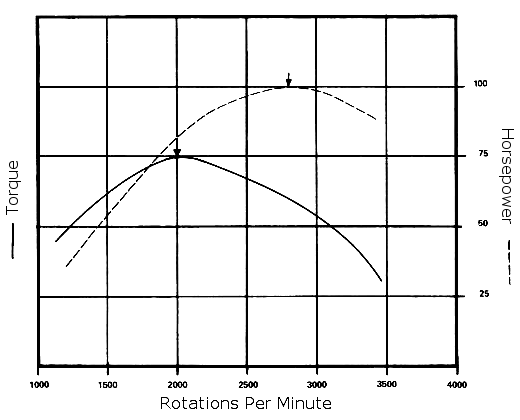You may have heard an auto manufacturer claim their new car has a certain level of horsepower. Although this claim may be true, it doesn't mean your engine is making that much power all the time! In fact, some drivers might not ever experience the engine's full power.

An engine makes different levels of power at different RPM levels. If someone claims their car has 400 horsepower, this is usually a peak measurement, and occurs at a certain RPM. For example, using the graph at the right, you could claim the engine has 100 horsepower (at about 2,800 RPM to be specific), while most of the horsepower levels here are below that. The torque, according to this graph, would be 75• at 2,000 RPM. Some graphs may appear much different than this example; some engines have a very noticable peak power point, and some graphs aren't as smooth, which can either be due to the data being raw (not smoothed out for a nice-looking graph), or due to an unusual engine design. Sometimes it can even be a mechanical problem.
Why Are Horsepower/Torque Curves Important?
These curves will give you an idea how the car will behave when you accelerate, and the data is even more important for drivers and mechanics looking to get the most out of a vehicle. Some engines have a lot of low-RPM torque (also called low-end torque), which is good for immediate acceleration, while a lot of high-performance engines have a lot of power just before the redline, which is good for reaching high top speeds without maxing out the speed early (if you have a lot of low-end power, as you pass the peak RPM in the final gear, you will lose power as RPMs increase).
